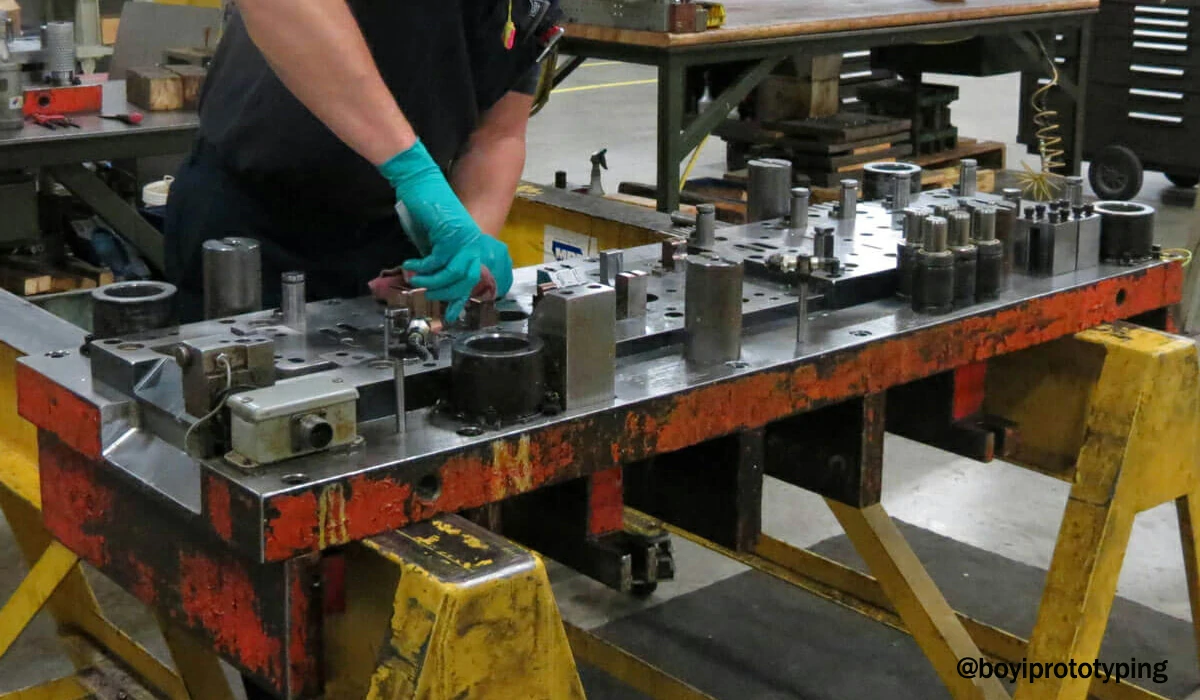Die manufacturing is a critical process in various industries, including automotive, aerospace, construction, and consumer goods. It involves creating a die, a specialized tool used to shape or cut materials into specific forms or designs. Dies are used to produce parts with high precision and accuracy, and their manufacturing process is essential to ensure the quality and performance of the final product.
Understanding Die Manufacturing
Die manufacturing is a complex process that requires a deep understanding of the materials, tools, and techniques involved. It involves designing and creating a die that can withstand the stresses and strains of the manufacturing process, as well as the wear and tear of repeated use. The die manufacturing process is critical to ensure that the final product meets the required specifications and standards.

The Importance of Die Manufacturing
Die manufacturing is essential in various industries because it enables the mass production of identical parts with high precision and accuracy. Dies are used to produce parts with complex shapes and designs that would be difficult or impossible to achieve through other means. The quality of the die directly affects the quality of the final product, making die manufacturing a critical process in various industries.
Die Manufacturing Process
The die manufacturing process involves designing the die using computer-aided design (CAD) software or other design tools. The material for the die is then selected based on the intended application and the type of material being processed. The die is then machined using various techniques, such as milling, turning, or grinding, and heat-treated to harden its surface. Finally, the die is finished by polishing or grinding its surface to achieve the desired level of precision and accuracy.
Die Material Selection
The selection of the die material is critical to ensure the quality and performance of the die. Dies can be made from various materials, including steel, aluminum, or tungsten carbide, depending on the intended application and the type of material being processed. The die material must be able to withstand the stresses and strains of the manufacturing process, as well as the wear and tear of repeated use.
Die Machining and Finishing
The machining and finishing processes are critical to ensure the precision and accuracy of the die. The die is machined using various techniques, such as milling, turning, or grinding, to create the desired shape and design. The die is then finished by polishing or grinding its surface to achieve the desired level of precision and accuracy.
Die Maintenance and Repair
Die maintenance and repair are essential to ensure the longevity and performance of the die. Regular cleaning and lubrication can help prevent wear and tear, while regular inspections can help identify any damage or defects. Proper storage and handling of dies are also essential to prevent damage and maintain their precision.

Challenges and Limitations of Die Manufacturing
While die manufacturing is a critical process, it also presents some challenges and limitations. Creating a die can be expensive, especially for complex designs or large-scale production. Dies are also designed for specific applications and materials, limiting their flexibility and adaptability. Additionally, dies can wear out over time, requiring maintenance and replacement.
Conclusion
In conclusion, die manufacturing is a complex and critical process that involves designing, material selection, machining, heat treatment, finishing, and testing. Understanding the die manufacturing process can help manufacturers optimize their production processes and improve product quality. By following these processes, manufacturers can create high-quality dies that produce parts with precision and accuracy.